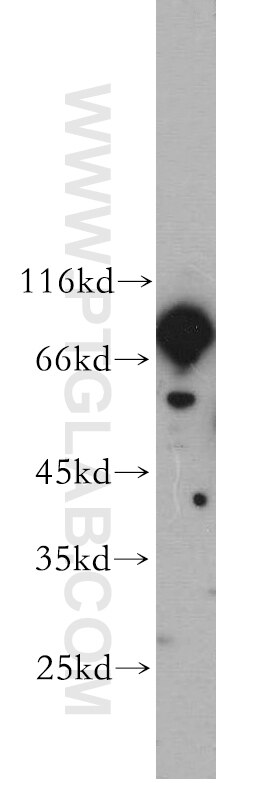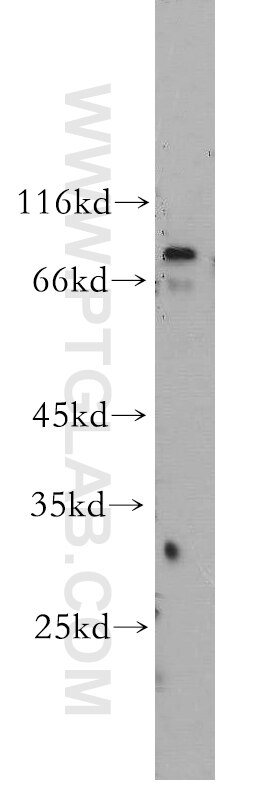Anticorps Polyclonal de lapin anti-RGS9
RGS9 Polyclonal Antibody for WB, ELISA
Hôte / Isotype
Lapin / IgG
Réactivité testée
Humain, rat, souris
Applications
WB, ELISA
Conjugaison
Non conjugué
N° de cat : 17970-1-AP
Synonymes
Galerie de données de validation
Applications testées
| Résultats positifs en WB | tissu cérébral de souris, cellules SH-SY5Y |
Dilution recommandée
| Application | Dilution |
|---|---|
| Western Blot (WB) | WB : 1:500-1:3000 |
| It is recommended that this reagent should be titrated in each testing system to obtain optimal results. | |
| Sample-dependent, check data in validation data gallery | |
Applications publiées
| WB | See 1 publications below |
Informations sur le produit
17970-1-AP cible RGS9 dans les applications de WB, ELISA et montre une réactivité avec des échantillons Humain, rat, souris
| Réactivité | Humain, rat, souris |
| Réactivité citée | Humain |
| Hôte / Isotype | Lapin / IgG |
| Clonalité | Polyclonal |
| Type | Anticorps |
| Immunogène | RGS9 Protéine recombinante Ag11976 |
| Nom complet | regulator of G-protein signaling 9 |
| Masse moléculaire calculée | 622 aa, 71 kDa |
| Poids moléculaire observé | 58 kDa, 70-75 kDa |
| Numéro d’acquisition GenBank | BC022504 |
| Symbole du gène | RGS9 |
| Identification du gène (NCBI) | 8787 |
| Conjugaison | Non conjugué |
| Forme | Liquide |
| Méthode de purification | Purification par affinité contre l'antigène |
| Tampon de stockage | PBS avec azoture de sodium à 0,02 % et glycérol à 50 % pH 7,3 |
| Conditions de stockage | Stocker à -20°C. Stable pendant un an après l'expédition. L'aliquotage n'est pas nécessaire pour le stockage à -20oC Les 20ul contiennent 0,1% de BSA. |
Informations générales
RGS9 is a member of the RGS family of signaling proteins that suppress the activity of G proteins by promoting their deactivation. There are two splice isoforms of RGS9 with quite different properties and patterns of expression. RGS9-1 is mainly found in the eye and is involved in regulation of phototransduction in rod and cone cells of the retina, while RGS9-2 is is expressed specifically in the striatum, a brain region involved in controlling movement, motivation, mood and addition. This antibody got about 58kD in the mouse eye and 70kD in the mouse brain in western blotting, both in line with their expected masses. Defects in RGS9 are a cause of prolonged electroretinal response suppression (PERRS).
Protocole
| Product Specific Protocols | |
|---|---|
| WB protocol for RGS9 antibody 17970-1-AP | Download protocol |
| Standard Protocols | |
|---|---|
| Click here to view our Standard Protocols |
Publications
| Species | Application | Title |
|---|---|---|
Genes (Basel) Extended Phenotyping and Functional Validation Facilitate Diagnosis of a Complex Patient Harboring Genetic Variants in MCCC1 and GNB5 Causing Overlapping Phenotypes. |



